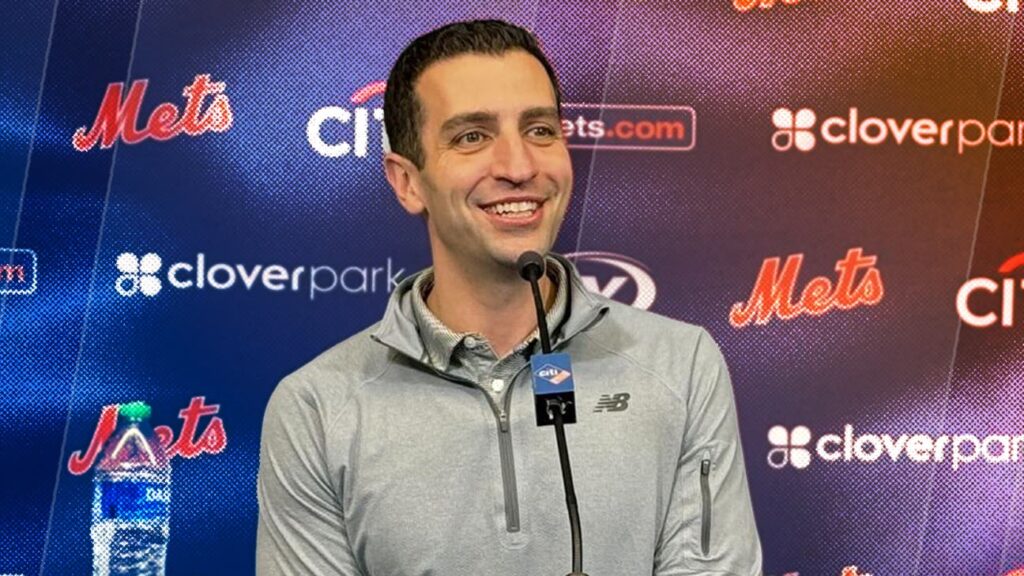It may be difficult to understand for the average baseball fan, but the Mets, who came into the season with injuries and question marks all over their starting rotation, own the best pitching staff in MLB.
With a 2.80 team ERA entering Friday night, New York is the only team in the league to have a sub-3.00 ERA. And though the bullpen has been incredible, the starters have stolen the show.
Featuring players like Clay Holmes, a reliever for almost the entirety of his career, Griffin Canning, who only had one season with an ERA below 4.00, and Tylor Megill, who showed flashes with the Mets but struggled to find consistency, New York’s starting rotation has been this season’s biggest surprise.
The mastermind behind it all has been president of baseball operations David Stearns, who has been known to have a knack for finding value, particularly pitching, in seldom looked places. And while he certainly thought the Mets’ pitching could be good, even he couldn’t foresee what would transpire.
“I don’t know that I could come into a season and say that I expected our starting staff to have a sub-3.00 ERA,” Stearns said. “I expected us to have a good starting rotation, a good pitching rotation, but, sure, a sub-3.00 ERA probably exceeds my expectations, especially when you add on the injuries we had in camp.”
Coming over from the Milwaukee Brewers, where he made a name for himself by becoming the youngest general manager in MLB history, Stearns also proved that he didn’t need the biggest payroll to have success, as Milwaukee made the playoffs five times during his eight-year tenure, with pitching at the forefront.
Although leveling up a tax bracket or two after joining New York and teaming up with owner Steve Cohen, Stearns used a similar principle as his time with the Brewers to assemble the Mets’ starting rotation, going after pitchers like Holmes (three-year, $38 million deal), Canning (one-year, $4.25 million deal) and Frankie Montas (two-year, $34 million deal) in free agency.
“But I also saw reason to believe that each of the guys that are in the rotation mix could and would be successful,” Stearns continued. “You never know whether it’s going to work, but we had reason to believe for all of them that there were things that they could do things, that in certain cases we could help them do, that would lead them to success and be able to contribute to a winning rotation.”
In an age of rising contracts and the wallet to be able to pull the trigger, Stearns instead opted for a different approach, at least for the starting pitching. So far, it’s worked out incredibly well.
But Stearns would be the first to say that he doesn’t deserve all the credit, giving praise to people like pitching coach Jeremy Hefner, whose role in getting the most out of his pitchers cannot be overstated.
“In terms of where Hef comes into this, he’s been outstanding,” Stearns said. “Hef, our entire pitching group, Desi [Druschel], [Jose Rosado], Danny Barnes is part of this, our catching infrastructure, [Glenn Sherlock] is part of this, being able to communicate with pitchers, really meeting them where they are, understanding what each pitcher is looking to achieve where they are in their careers, how they want to get better and working with them to help them be the best versions of themselves, and I think Hef does that extremely well and is aided by a really talented group around him as well.”
And even though some of the pitchers on the Mets’ roster aren’t necessarily considered to be top-of-the-line, elite pitchers in the general consensus, Stearns doesn’t think it’s fair to dismiss the hard work and dedication from the pitchers themselves to get to this point.
After all, each one of them is with the team because they have the talent to be there.
“I think it undersells who these guys are when we look at them or label them as reclamation projects,” Stearns said. “The pitchers who have come in here and have had success are really talented major league pitchers and have proven prior to coming here that they are really talented major league pitchers at various points in their careers.
“Maybe not for the sustained periods that they would’ve liked or expected of themselves, but these are very talented pitchers and so that’s the common thread among all of them – they’re good pitchers, they have good stuff, they’ve had success at the major league level and maybe there are things that they had gotten away from. Or maybe there were things that we noticed that we can help them get a little bit better at. But the underlying commonality among all of them is that they’re talented and they come in here and they’ve worked hard and for the most part we’ve had some decent results out of it.”
Read the full article here

